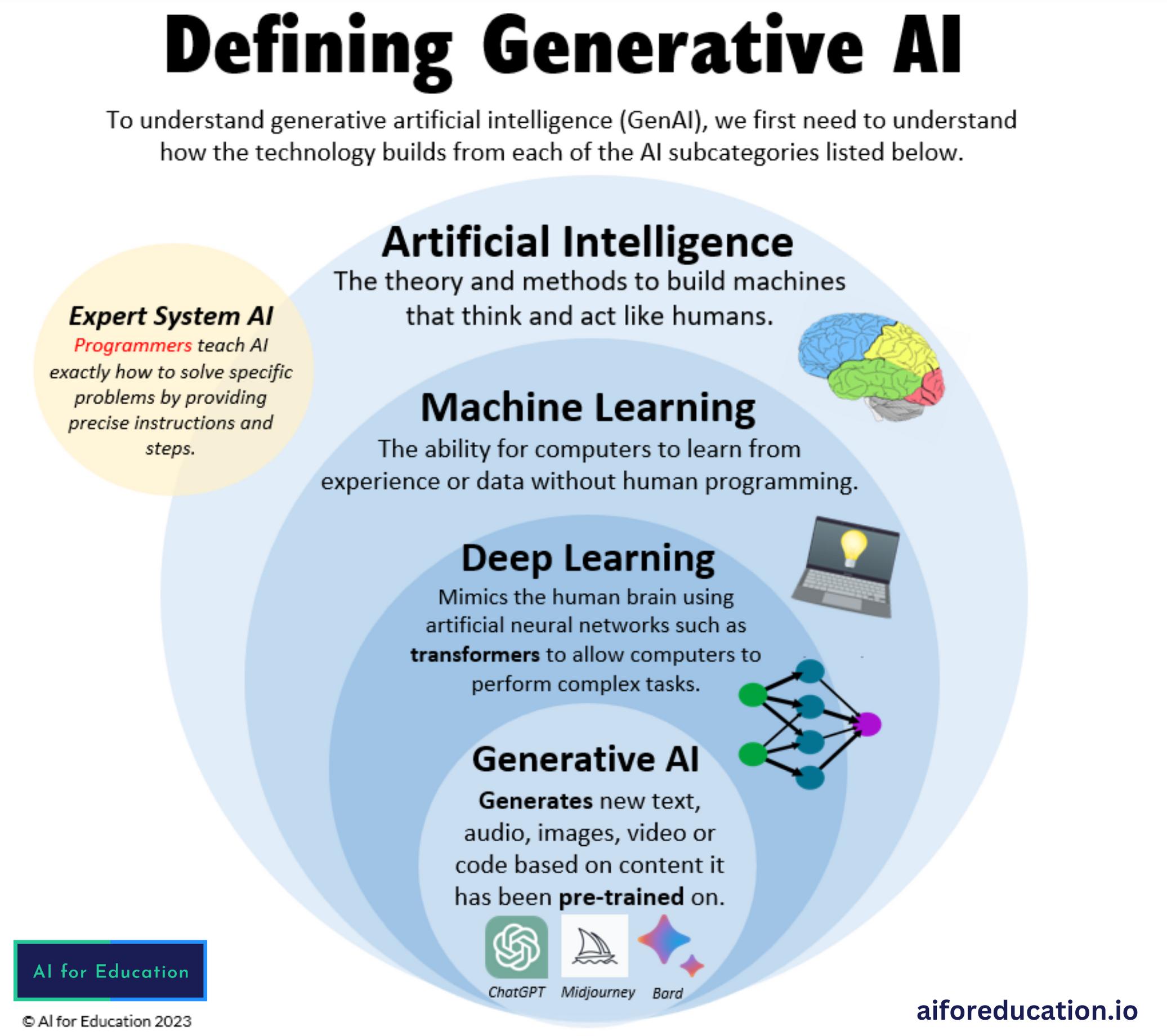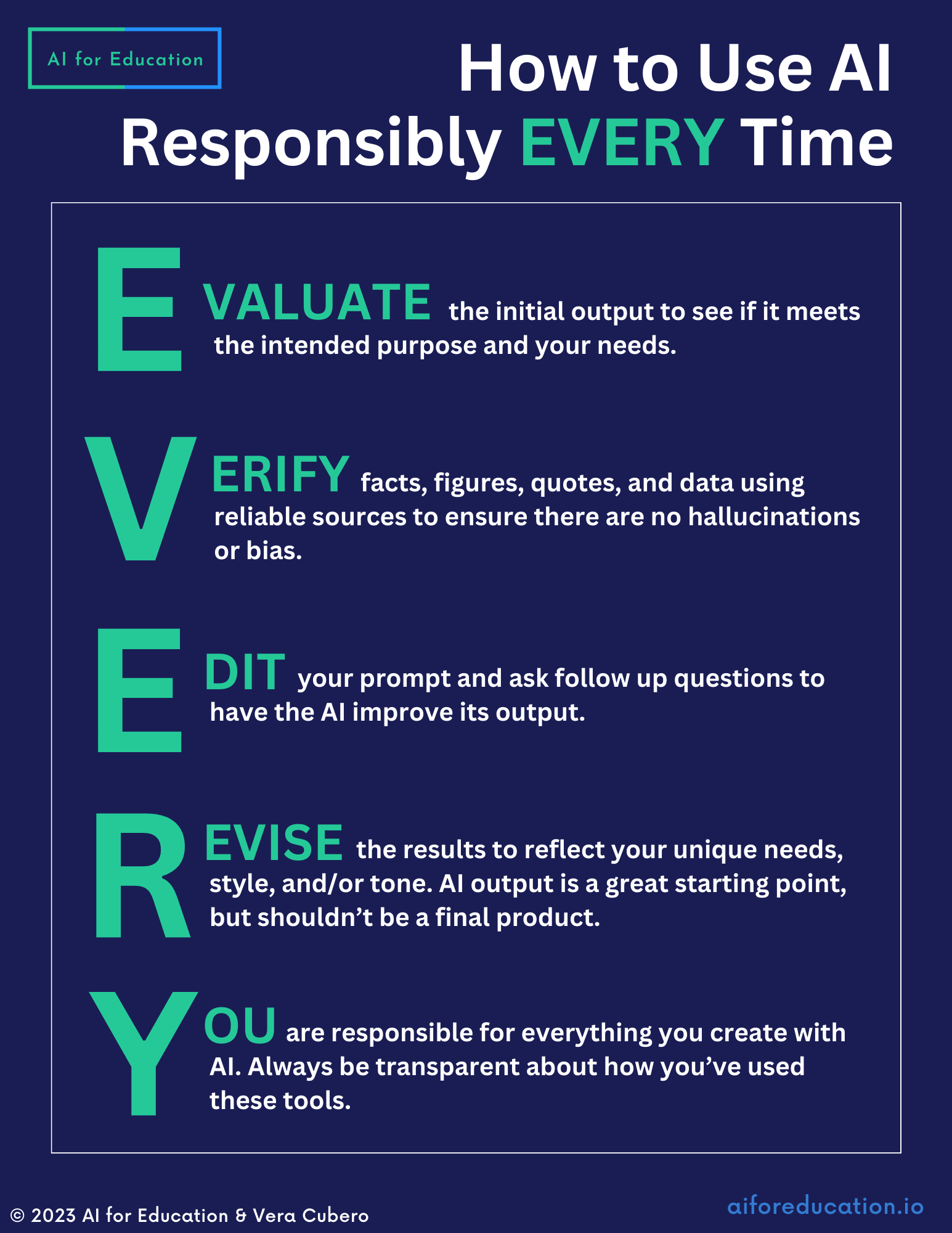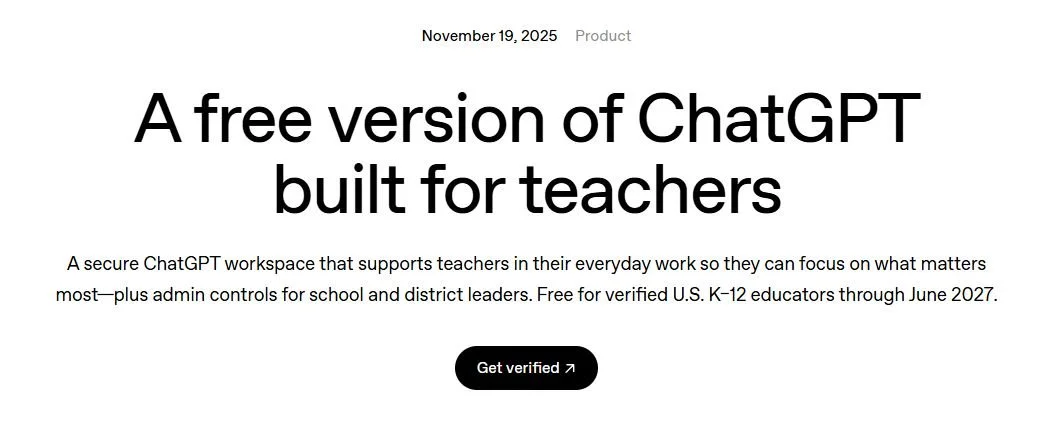Resource Center
Free resources to help educators navigate AI adoption responsibly.
Prompt Library
Introduction to AI for Students
School & Classroom Resources
A resource to help students build safe, ethical, and effective habits when using Generative AI. It offers a structured way to reflect on their current use, recognize where GenAI is supporting their learning, and identify when they are over-relying on the technology.
Exploration of how to harness generative AI's (GenAI) power to enhance, not replace, the cognitive lift and meaningful learning in K-12 math classrooms.
This guide helps parents understand what's happening, ask the right questions, and effectively support their child's learning in our new AI landscape.
Compilation of the research studies that are most often cited by our team during training sessions and provide a strong signal for the state of GenAI in education.
Comparing the key features available in the free vs. paid tiers of some of the most popular Generative AI models used by educators.
Keeping up with the rapid pace of AI development and its evolving role in education can feel daunting. There are a number of excellent newsletters, thought leaders, and organizations available to help you stay informed. To get you started, we’ve compiled a list of some of our favorites that range from broader AI industry coverage to specialized educational expertise.
33 states (and Puerto Rico) now have official guidance or policy on the use of AI in K12 schools. We’ve compiled them in this handy resource which includes summaries and links to the full guidance for each.
An initial exploration of how to harness generative AI's (GenAI) power to enhance, not replace, the cognitive lift and meaningful learning in K-12 literacy classrooms.
Before implementing generative AI in educational settings, it's crucial to understand the perspectives and experiences of all stakeholders. Here is a set of 5 key questions designed to help inform your generative AI adoption strategy.
As we begin the 2024-2025 school year, it’s clear that AI literacy is a crucial skill for both educators and students. Is your school or district ready to explore responsible Generative AI (GenAI) integration? Join our 3x3 GenAI Roadmap Challenge! By completing three key tasks in the first semester of the school year, you’ll be well on your way to empowering faculty and students to use GenAI ethically and effectively.
The ability to critically evaluate the quality of Gen AI outputs is a crucial AI literacy skill. The following activities can help educators and students develop their abilities to analyze, evaluate, and improve text created by an AI.
Chatbot Cheatsheet: This handy comparison chart breaks down the key features, costs, and limitations of popular AI platforms, and most importantly, what they're best at.
In our Prompting 101 session we focus on strategies for getting the best out of popular and powerful free GenAI tools like ChatGPT, Claude, and Gemini.What's great is there are many different prompt frameworks out there for educators to use - including our 5S Framework: Set the scene (priming), be Specific, Simplify language, Structure output, and Share feedback. We also break down a good prompting in the following four steps:
Launchpad Webinar Series

Articles & Research Papers
This school year we've been focused on working with our partners to build student AI literacy, which is why we love doing Prompt-a-Thons.
To help you catch up with another busy week in AI + Education news, check out our weekly update on the key highlights for the week of December 1st, 2025.
To help you catch up with another busy week in AI + Education news, check out our weekly update on the key highlights for the week of November 24th, 2025.
New research by US PIRG examined a few of these toys and found multiple safety concerns.
New data from EdWeek shows significant progress in AI professional development for educators—and highlights that there is still significant work left to do to support teachers' AI literacy.
OpenAI just made a major announcement, releasing ChatGPT for Teachers— launching a secure workspace designed specifically for K-12 educators.
To help you catch up with another busy week in AI + Education news, check out our weekly update on the key highlights for the week of November 17th, 2025.
A few weeks ago, we co-hosted a GenAI Guidelines Development workshop with Charleston County School District that brought together educators, students, parents, researchers, and community members.


















































































